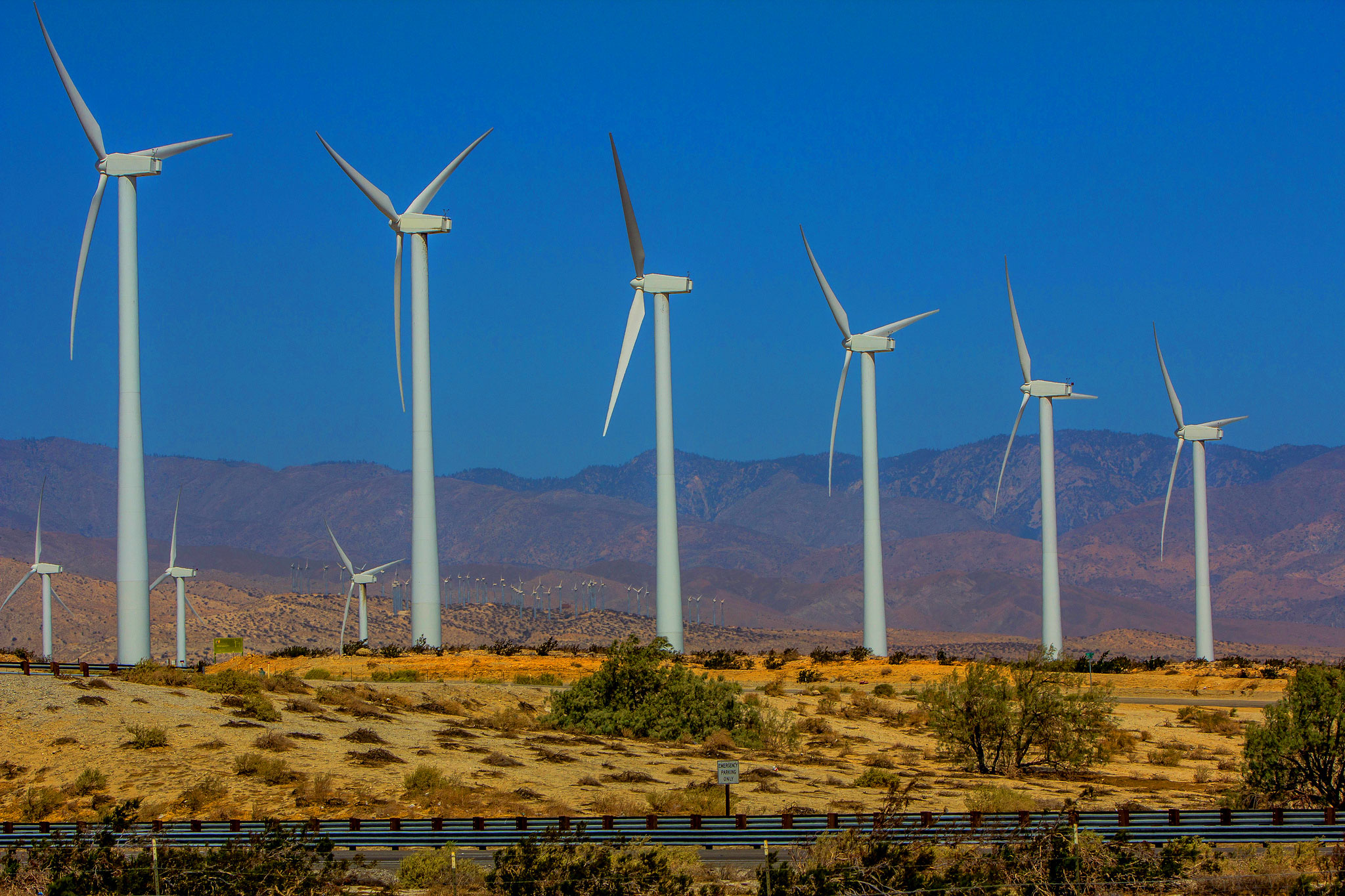Wide-scale US wind power could cause significant warming

Wind power is booming in the United States.
It’s expanded 35-fold since 2000 and now provides 8% of the nation’s electricity. The US Department of Energy expects wind turbine capacity to more than quadruple again by 2050.
But a new study by a pair of Harvard researchers finds that a high amount of wind power could mean more climate warming, at least regionally and in the immediate decades ahead. The paper raises serious questions about just how much the United States or other nations should look to wind power to clean up electricity systems.
The study, published in the journal Joule, found that if wind power supplied all US electricity demands, it would warm the surface of the continental United States by 0.24 ˚C. That could significantly exceed the reduction in US warming achieved by decarbonizing the nation’s electricity sector this century, which would be around 0.1 ˚C.
“If your perspective is the next 10 years, wind power actually has—in some respects—more climate impact than coal or gas,” coauthor David Keith, a professor of applied physics and public policy at Harvard, said in a statement. “If your perspective is the next thousand years, then wind power is enormously cleaner than coal or gas.”
Specifically, the “avoided warming” achieved by eliminating fossil-fuel sources could surpasses any warming from wind in about a century in the studied scenario, as emissions reductions accumulate.
Keith and lead author Lee Miller, a postdoc at Harvard, stress that the conclusions mean scientists and policymakers should take this side effect of wind power seriously—and carefully consider what role the resource should play in the shift to clean energy.
“Our analysis suggests that—where feasible—it may make sense to push a bit harder on developing solar power and a bit less hard on wind,” Keith said in an e-mail.
Notably, the warming effect from wind in the studied scenario was 10 times greater than the climate effect from solar farms, which can also have a tiny warming effect.
The core problem is that wind turbines generate electricity by extracting energy out of the air, slowing down wind and otherwise altering “the exchange of heat, moisture, and momentum between the surface and the atmosphere,” the study explains. That can produce some level of warming.
Previous studies also pointed out the effect, but they generally looked at either small-scale or global impacts. The new study sought to explore a “plausible scale” of wind power in a single large country. It compared model results against direct observations at wind farms, finding that they matched.
There are some important limitations to the study. It notes that the warming effect depends strongly on local weather conditions, as well as the type and placement of turbines. It didn’t analyze impacts outside the continental United States or time periods beyond a year. And it's difficult to imagine anything approaching this level of wind power actually being built in the nation.
Stanford professor John Dabiri criticized the study, saying the simulations relied on a proxy for wind turbines that increases aerodynamic drag at the earth’s surface (see “John Dabiri: Innovators Under 35”).
“It is well known that this type of modeling assumption does a poor job of predicting the flow in real wind farms,” he said in an e-mail.
Dabiri, an expert on wind turbine designs, says a “more realistic” earlier simulation found “little temperature change near the surface.”
The American Wind Energy Association swiftly challenged the framing of the conclusions as well.
"Because the recent study only focuses on localized impacts over a short time period, it greatly overstates the surface temperature impact of renewable resources relative to fossil fuels," read a statement forwarded to MIT Technology Review, attributed to the trade group's former senior director of research, Michael Goggin. "If the paper instead looked across the global and long-lasting timescales that matter, renewable resources would fare hundreds of times if not infinitely better than fossil resources."
The Harvard researchers said their findings closely matched directly observed effects from hundreds of US wind farms.
Keith, an outspoken proponent of clean energy to combat global warming, says he’s sure the paper will be misinterpreted or misrepresented by some to argue against the rollout of wind power.
“But it would be unethical for the research community to hide impacts from renewables because we think they should be promoted,” he said.
Deep Dive
Climate change and energy
The problem with plug-in hybrids? Their drivers.
Plug-in hybrids are often sold as a transition to EVs, but new data from Europe shows we’re still underestimating the emissions they produce.
Harvard has halted its long-planned atmospheric geoengineering experiment
The decision follows years of controversy and the departure of one of the program’s key researchers.
Why hydrogen is losing the race to power cleaner cars
Batteries are dominating zero-emissions vehicles, and the fuel has better uses elsewhere.
Decarbonizing production of energy is a quick win
Clean technologies, including carbon management platforms, enable the global energy industry to play a crucial role in the transition to net zero.
Stay connected
Get the latest updates from
MIT Technology Review
Discover special offers, top stories, upcoming events, and more.